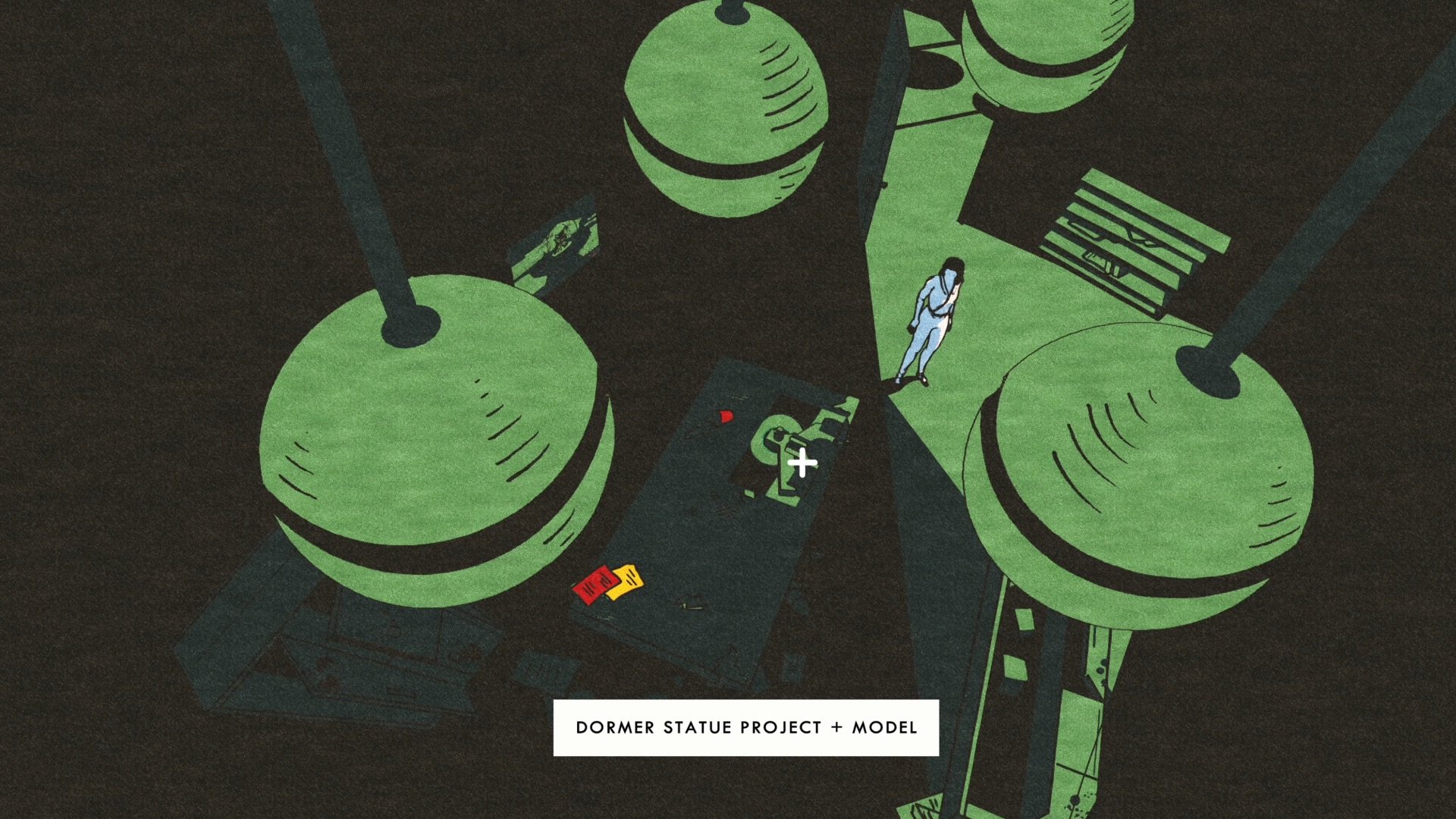Phoenix Springs [Review]
Is Phoenix Springs a game, a place, or a state of mind?
Phoenix Springs. Credit: Calligram Studio
Phoenix Springs, a new point-and-click adventure from three-person team Calligram Studio, is a surreal sci-fi neo-noir detective story that evokes the work of David Lynch and David Cronenberg. With its striking presentation, dreamlike atmosphere, and inventive take on adventure game genre systems, Phoenix Springs cast a spell that had me in its grip until I finished the game—and beyond.
The game uses noir tropes to tell the story of Iris, a reporter who searches for her brother, Leo. Her investigation uncovers clues that often raise more questions than answers, leading her from the city's slums to Phoenix Springs, a desert oasis populated by a strange cult. We see the whole story from her perspective—she dryly narrates everything in true hardboiled detective fashion, including other characters’ dialogue.
Phoenix Springs. Credit: Calligram Studio
Gameplay is mostly what you’d expect from a point-and-click adventure. You click around the environment to move around, and a menu will pop up if you interact with an object of interest, presenting the options to look, use, or talk. Where Pheonix Springs departs from genre convention is in its inventory.
You have no items that you carry, only ideas in your head. Gleaning a clue or lead from a person, object, or the environment will add it to your mind map collection, which you can view by right-clicking. These become topics you can raise in conversation or “use” to examine things in the context of that idea. These interactions between the world and the fragments in your head are how you solve puzzles. Glean a new insight, and one idea might recede to be replaced by another lead to pursue or open up a locked door or a new location. The approach puts you in a different headspace than a typical point-and-click, but it’s intuitive and fits the character and detective fiction genre the game relishes in.
Phoenix Springs. Credit: Calligram Studio
The game’s striking visuals combine toon-shaded 3D, illustration, and hand-drawn animation. Everything exists over a newspaper-like texture, and the visibility of that texture, even through black, makes everything look printed. Those deep, shadowy (but not true) blacks and clean line art filled with clean fields of primary and secondary colors add to the art’s bold pulp comic-like appearance. The game’s camera views the world from high, low, and Dutch angles; the hard-shadowed images are visually compelling textbook noir. When we see an important action, the 3D scenes are punctuated by short, cinematic, hand-drawn animated cutscenes that follow the same stylistic rules. The deliberate, cohesive art direction of Phoenix Springs is a marvel.
The surreal settings, odd characters, and general tone of the game reminded me of Lynch or Cronenberg films. Some conversations are dream-like, following strange logic, and the game touches on themes of memory, self, consciousness, community, and the intersection of biology and technology. The game’s haunting and unsettling soundtrack creates some of the same feelings I get from those filmmakers’ works, fiction that leaves me questioning its meaning and the nature of its world, just like Pheonix Springs did.
Phoenix Springs. Credit: Calligram Studio
My only gripe with the game is that when I was lost in a large, multi-screen area without knowing what to do, it became tedious to move from screen to screen as I’d go in circles, even though Iris runs if you double-click. I understand the lack of fast travel between screens—it would break the game's rhythms—but it feels like traversal takes too long. Still, Phoenix Springs isn't a very long game, so in the grand scheme of things, this is very minor.
Phoenix Springs is a singular experience and a new hallmark for the point-and-click adventure genre. It’s a pensive, deeply meaningful piece of art and a great work of surrealist neo-noir fiction. There’s a lot to the game, and I’ll be left thinking about it for a long while.
Phoenix Springs is available now on PC (Steam).
Overall Score: 9/10
Played on: PC





